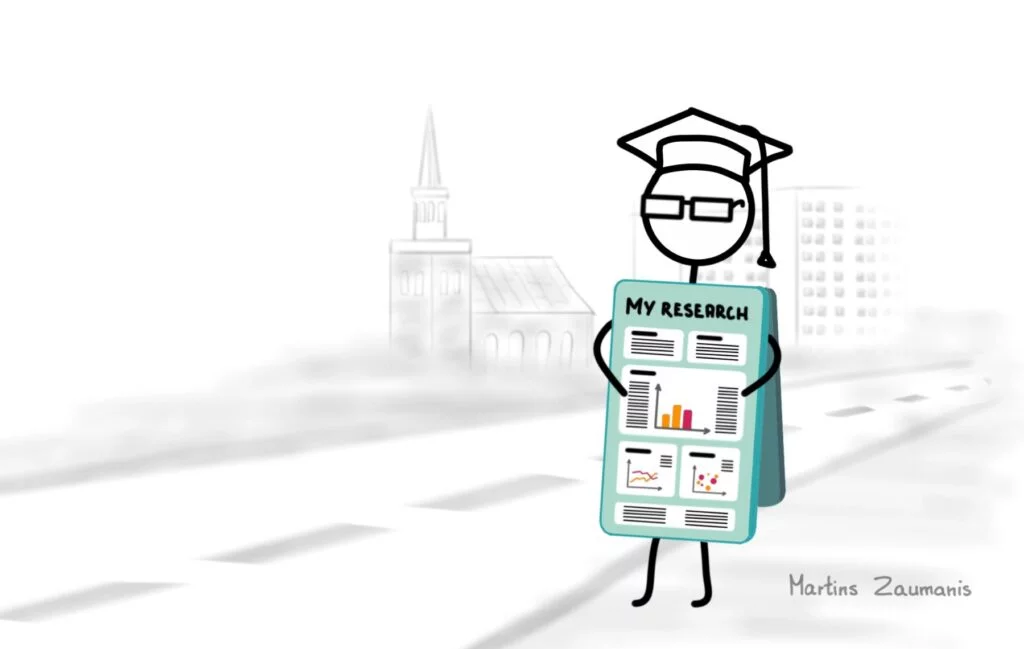
Poster sessions are the heart of scientific conferences. Here presenters meet the visitors, exchange ideas, and form new relationships. But this will happen only if the poster design attracts visitors’ attention and its content helps the author to explain the research. A good conference poster template will make your job in designing such a poster much easier.

In this article, you will find four different conference poster templates that you can download and use right away. To find out the advantages and disadvantages of each, keep reading this article. Hint: the design we have all used most of the time will be the wrong one.
After discussing the templates, I will share tools that make designing a poster more efficient and the result – better. Let’s dive in.
A traditional academic-style conference poster looks a lot like the one in figure below. Its sections closely resemble those of a research paper: Introduction, Materials and Methods, Results, Conclusions, References, and Acknowledgements. The boldest authors might have swapped the section titles for something more related to their research, but this will not disguise the general characteristics of this poster layout:
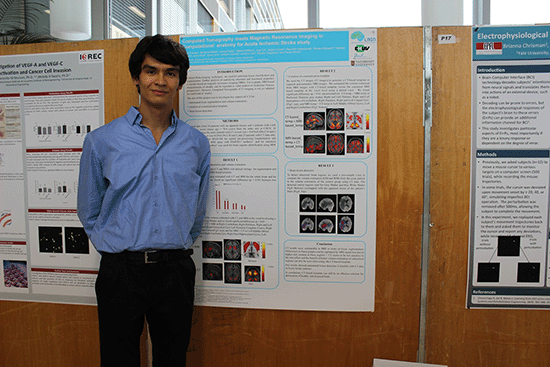
You probably noticed that I have a certain dislike for the traditional style poster. I will offer better conference poster designs later in this article. But first, let me acknowledge that there are some situations when this type of layout can be useful:
In most cases, including a conference poster session where the author is required to stand next to the poster, the traditional posted design is next to useless. Instead, use one of the three conference poster templates that I offer next.
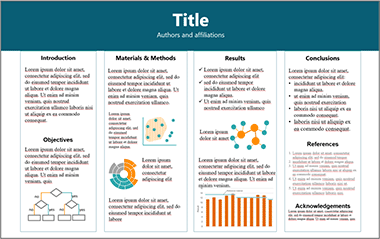
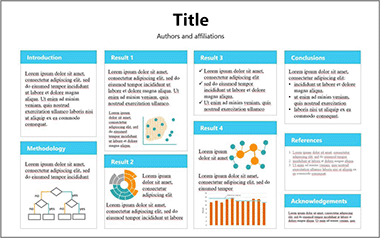
You will access these traditional academic poster templates in the download
In a typical academic conference, most of the text that you have pasted on the poster is pointless. It would be an extremely socially awkward situation if the visitor would spend 10 minutes reading your poster while you silently observe this process. I can assure you that after 20 seconds one of you is going to budge and start a conversation.
A conversation is the whole point of a poster session – you, the presenter, want to interact with people. And the visitors want to hear from the author. This means that you can delete most of the text because you will be there to explain it orally.
Another pitfall of the traditional posters is the sheer amount of information they hold. The visitors can’t spend 20 minutes chatting to the presenter because they also need to browse the other 150 posters.
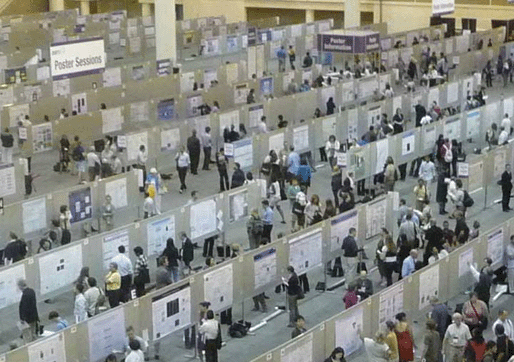
Actually you, the presenter, are also not interested in spending a lot of time with a single visitor because other potential guests, seeing that you are busy might simply pass by. This reduces your networking opportunities. Who knows – perhaps one of the people to whom you didn’t talk had a brilliant idea for a collaboration.
So there you go – most of the time neither the presenter nor the visitor are particularly interested in chatting for more than a couple of minutes. And yet, none of them knows how to politely get out of the conversation so it drags on.
Now that we have identified the key problems with the typical academic poster, let’s take a fresh look at designing a more effective one. The figure below shows a conference poster template that I designed to help you intuitively apply the best poster design principles. Its main focus is on visual information – graphs, flow charts, and illustrations. Since this template is going to be used when the author is present to explain the content, let’s call it The Presenter’s Poster.
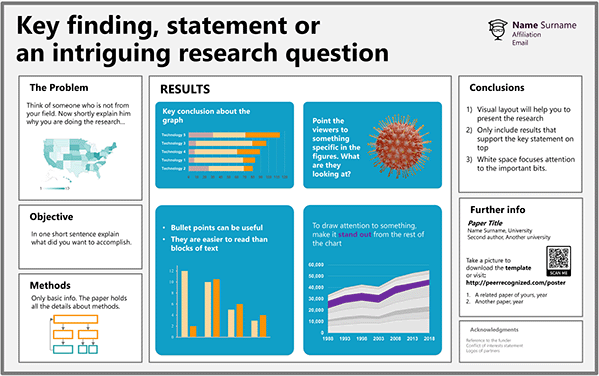
The template is simple enough to ensure that designing the poster will not take more of your time than creating the traditional poster.
When using the Presenter’s Poster template, focus on the most important results. If visitors want to dive into the details, hand out your full research paper or add a link on your poster for downloading it. Better yet, exchange contacts and agree to meet during the lunch break for an in-depth conversation. You can also exchange business cards and follow-up once you are back home.
Scrapping the excessive information from the poster is going to free up space on the poster. Now you can make the charts and illustrations large enough for people to see them without a magnifying glass. Not only will it facilitate discussions; larger figures are more likely to attract the interest of passers-by.